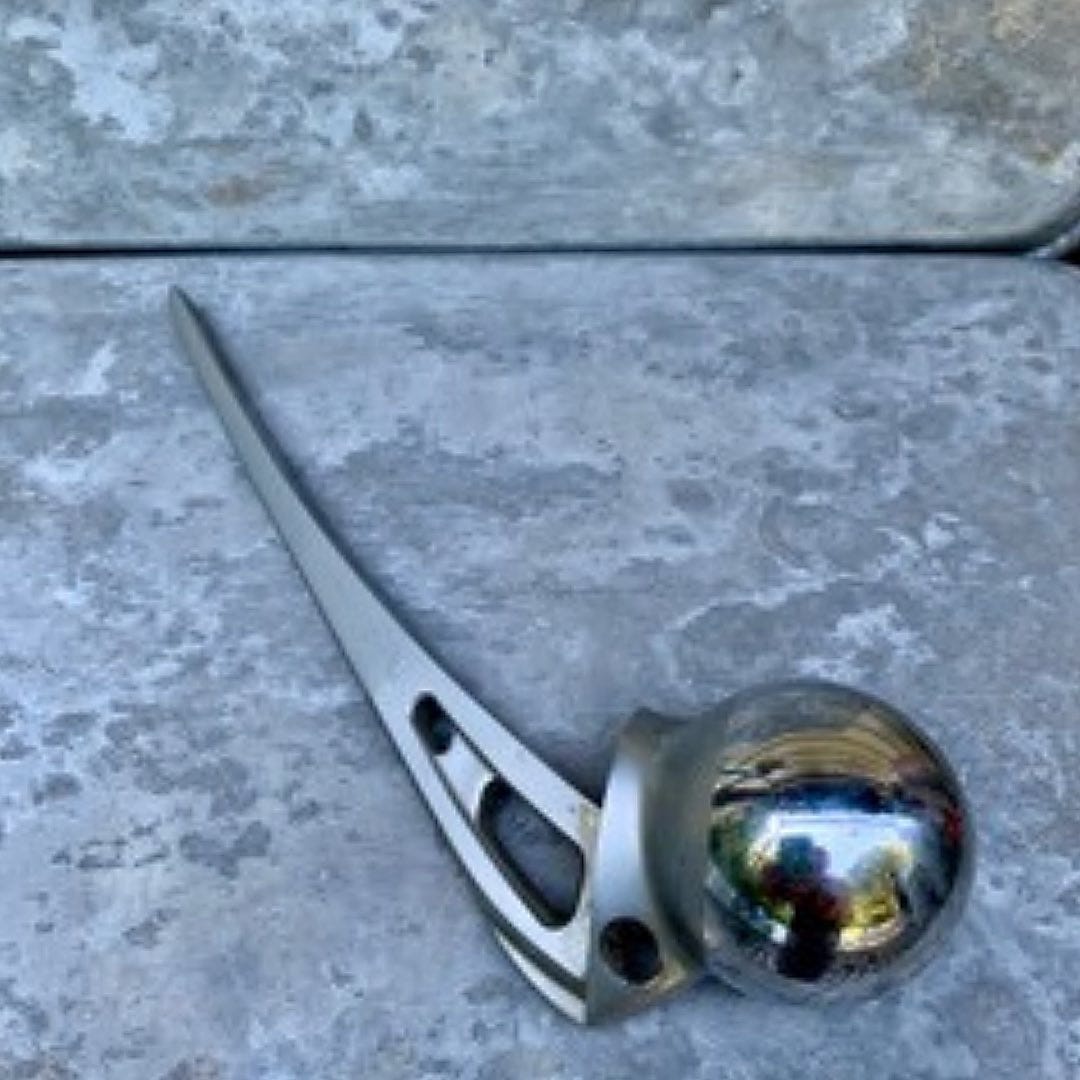MY FATHER'S HIP
“The doctor offered a bleak diagnosis—bedridden mostly, with the occasional wheelchair jaunt.”
In October, 1963, during stormy seas, my father fell forty-five feet into the empty hold of a merchant ship on her way to pick up lumber in the Pacific Northwest. The captain found his way to the Columbia River, and my father was transported to a hospital in the small town of St. Helens, Oregon. From what I gathered over the years, the doctors filled him with morphine for three days, until a youngish orthopedist said, “It looks like he’s not going to die,” or something to that effect, “so we need to start getting these bones mending.”
They counted fifty-seven broken bones—pelvis, femurs, vertebrae, knees, ankles, and both hips. He went from six feet tall to 5’10”. He broke one arm, metatarsals, one wrist, a number of ribs, and so on. I was five years old, and when my mom and I drove to him from Anaheim, Dad looked exactly like the cartoon version of someone in traction: arms and legs lifted in all directions, mummy wrapped. I think he stayed in that hospital for four months. The doctor offered a bleak diagnosis—bedridden mostly, with the occasional wheelchair jaunt.
My father wanted to come home. The doctor said, “I’ll release you, but this will be your last shot of morphine.” It was. Dad switched from morphine to Darvon to a daily quart of vodka in order to numb himself from constant pain. In 1965 we moved to South Carolina so he could get paid under the table by his father, who ran a small textile supply company. And somehow my father went from wheelchair to crutches, then began his lifelong experiment with hip replacements after various pins and nails—the original fix from back in Oregon—shimmied their way free.
Although hip-replacement surgery seems an everyday thing now, I think my father may have been an unwitting guinea pig down at the VA hospital in Savannah. I believe he had his first replacement in 1968, another in 1970, two in 1979. He got off the Darvon. He didn’t drink as much. He went from crutches to canes (that he forever forgot in diners) to walking without a noticeable limp. At some point a surgeon decided to give me the old replacement hips when they excised them for a newer model.
But here’s the story, really: My father and his father didn’t get along, and within a year of our move to South Carolina, his father fired him. Dad's social security benefits came to $180 a month, not enough to sustain a family. So he founded his own textile company that competed against his father’s. That's the kind of stubborn grit he had. He manufactured something called "replacement aprons," made from calfskin, to be used on looms to keep yarn from snagging on metal parts. Splitting and skiving machines, stripping tables, dividing machines rigged from old printing presses, manual labor. He provided for us, and he dealt with pain by the minute.
I’m a writer. I keep this hip on my desk to remember that in the grand scheme of things, writing ain’t all that hard.
My father died when I was twenty-four years old, from lung cancer. He never smoked.
—George Singleton
George Singleton has published nine collections of stories, two novels and a book of writing advice. He’s a member of the Fellowship of Southern Writers, has received a Guggenheim fellowship and lives in South Carolina.



